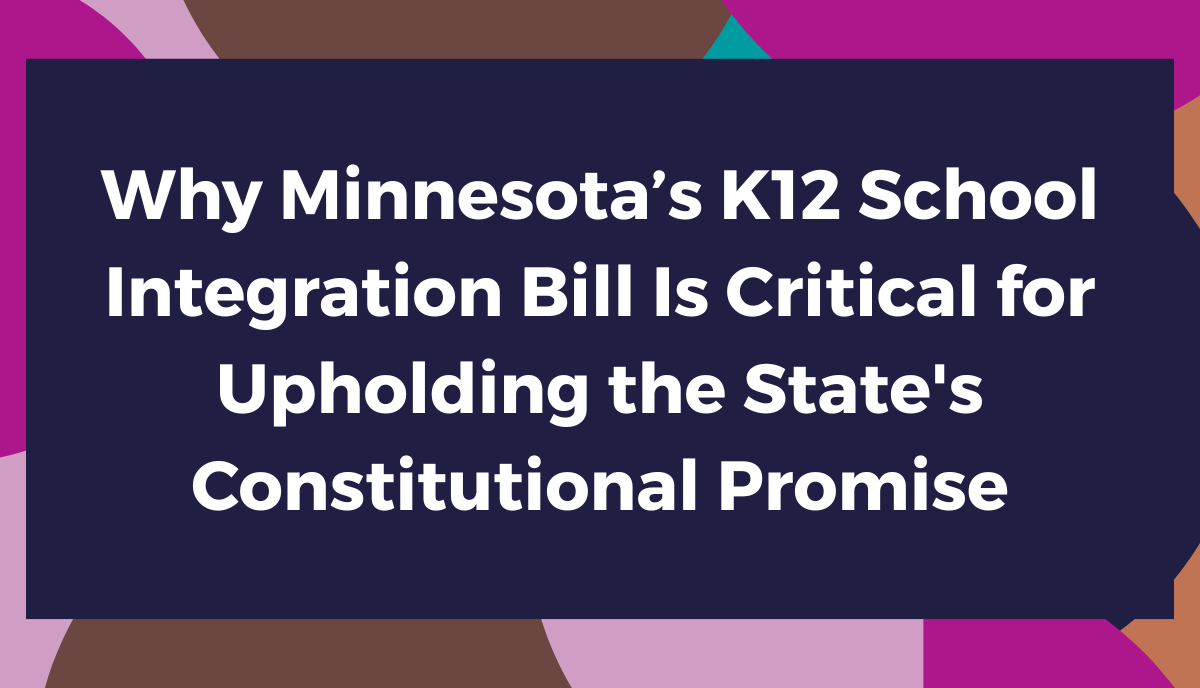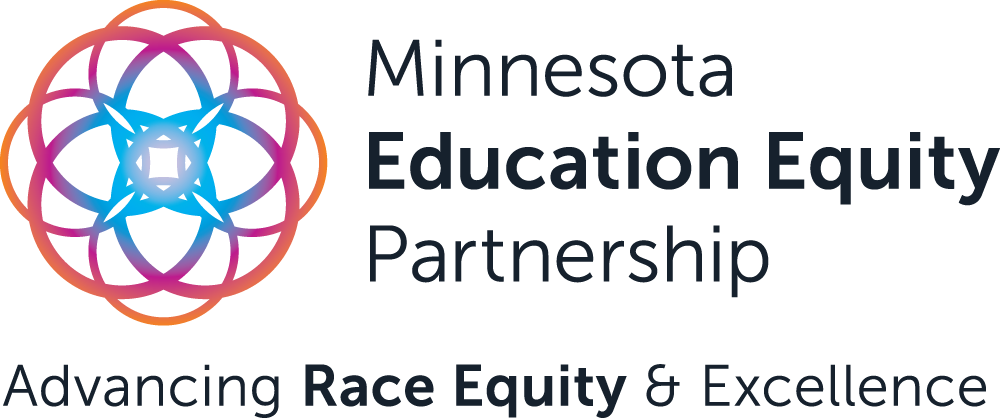
Why Minnesota’s K12 School Integration Bill Is Critical for Upholding the State’s Constitutional Promise
On March 27th, Rep. Cedrick Frazier (DFL–New Hope) introduced the Integration Resolution Bill (HF 2899), a bold new vision for ensuring every Minnesota student has access to an equitable, integrated, and well-resourced public education.
The Integration Resolution Bill directly confronts Minnesota’s entrenched school segregation—both racial and economic—to build a stronger public education system in Minnesota.
It lays out a bold strategy to build inclusive, opportunity-rich learning environments that can improve academic outcomes for students from People of Color, Indigenous (POCI) communities while benefiting every student in our multiracial democracy.
“As the chief author of the Integration Resolution Bill, I stand firmly behind Minnesota’s moral and constitutional obligation to deliver equitable education to all our children,” affirmed Rep. Cedrick Frazier (DFL-New Hope).
”This legislation is not merely an incremental policy adjustment—it represents a fundamental recommitment to the promise of integrated, high-quality public education in our state. By directly confronting the persistent racial and economic segregation in our schools, we create the conditions for all students to thrive. When we bring diverse communities together in well-resourced learning environments, we don’t just improve outcomes for students of color and Indigenous communities—we prepare every Minnesota child to participate meaningfully in our multiracial democracy. The path to educational excellence runs through integration, and this bill charts that course with clarity and conviction.”
The Integration Resolution Bill was developed through a nine-month collaborative work group process facilitated by Minnesota Education Equity Partnership (MnEEP) and its Race Equity for Accelerating Learning (REAL) Network—a statewide group of education leaders, race equity advocates, legal experts, practitioners, and POCI community members.
MnEEP brought a critical race equity lens to the process, ensuring the bill not only responds to Minnesota’s legal and constitutional obligations, but also centers the lived experiences and priorities of the students and communities most impacted by segregation and systemic underinvestment.
“HF 2899 represents a bold, new template for rebuilding our educational system in Minnesota to be more integrated, inclusive, and adequately funded,” said Leiataua Dr. Jon Peterson, Senior Fellow and Director of Policy at MnEEP.
“A world-class education for each and every student is what this bill is aiming toward, and we plan to keep our collective eyes on that prize.”
Why It Matters: A Constitutional and Educational Imperative
Under Article XIII, Section 1 of the Minnesota Constitution, the state is required to provide a “general and uniform system of public schools.”In its 2023 ruling in Cruz-Guzman v. State of Minnesota, the Minnesota Supreme Court reaffirmed that education is a fundamental right under the state constitution.
The Court held that if racial segregation is shown to be a substantial factor in producing inadequate educational outcomes, it may constitute a violation of the state’s constitutional obligation, even if the segregation was not created or maintained intentionally.
Yet today, segregation and underfunding remain widespread in Minnesota’s public schools, including in some of its most racially diverse districts:
- In Minneapolis Public Schools (2020–21), 23 schools enrolled more than 80% students of color, while 12 schools enrolled fewer than 40% students of color.
- In Saint Paul Public Schools, 28 schools enrolled over 90% students of color, and 36 schools had student populations over 80% students of color. (Source: Minnesota Reformer, 2023)
These patterns are no accident. They are the result of deeply entrenched systems—from housing policy and school boundary lines to chronic disinvestment—that have reinforced school segregation for generations.
The consequences are undeniable: Segregated and under-resourced schools systematically deny students access to rigorous coursework, experienced educators, and college and career pathways.
A system that continues to underserve POCI students fails our Constitution—and threatens Minnesota’s future.
What the Integration Resolution Bill Proposes
HF 2899 outlines a strategic, equity-driven path forward by:
- Providing targeted incentives and funding for districts to develop school integration plans, including voluntary interdistrict enrollment and magnet programs and better pay for teachers participating in those plans.
- Invests in culturally validating pedagogy and leadership development for educators.
- Expands access to advanced coursework, high-quality teaching, and college readiness programs for historically underserved students.
- Increasing extended-time revenue so more schools—including charters—can offer strong, well-resourced summer and after-school learning opportunities.
- Establishing state-level oversight and accountability to track progress on integration and equity goals.
The bill recognizes that achieving equitable education isn’t optional. It’s both a constitutional mandate and a strategic investment in Minnesota’s future.
Backed by Research: Integration Yields Powerful Results
A 2025 nationwide study published in PNAS Nexus analyzed over 200 of the largest public school districts in the U.S., representing 4.5 million elementary students. It found:
- Merging adjacent school boundaries could reduce racial and ethnic segregation by a median of 20%, and by as much as 60% in some districts.
- These changes would increase student travel time by an average of less than four minutes each way.
- Districts with adjacent but racially distinct school zones—such as those common in Minnesota’s metro area—show the highest potential for meaningful, cost-effective integration.
Research further highlights the benefits of integration extend beyond test scores. Diverse schools cultivate empathy, civic engagement, and cross-racial understanding—critical skills for participating in a multiracial democracy and economy.
Looking Ahead: Advancing a Bold Path Toward Integration and Equity
hile HF 2899 will not advance this session, Rep. Frazier and MnEEP are committed to building support for future legislative action. The coalition of partners who helped shape this bill will continue to organize, educate, and advocate for a system that ensures all Minnesota students—especially POCI students—have access to inclusive, integrated, and well-resourced public schools.
